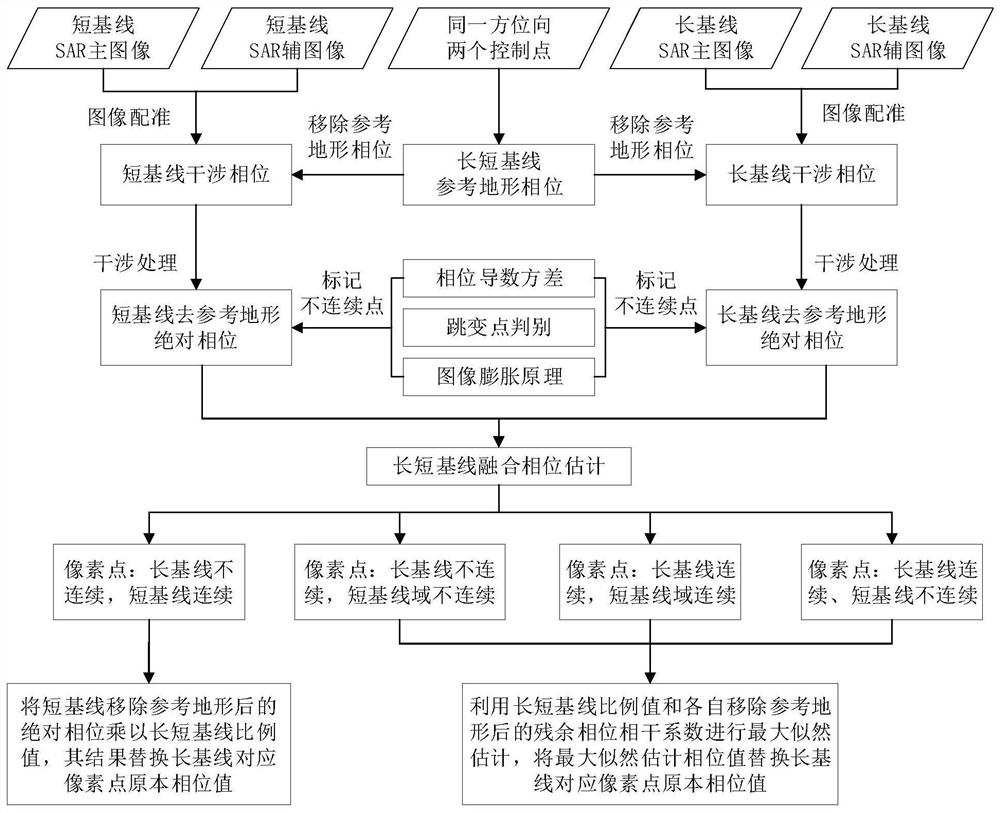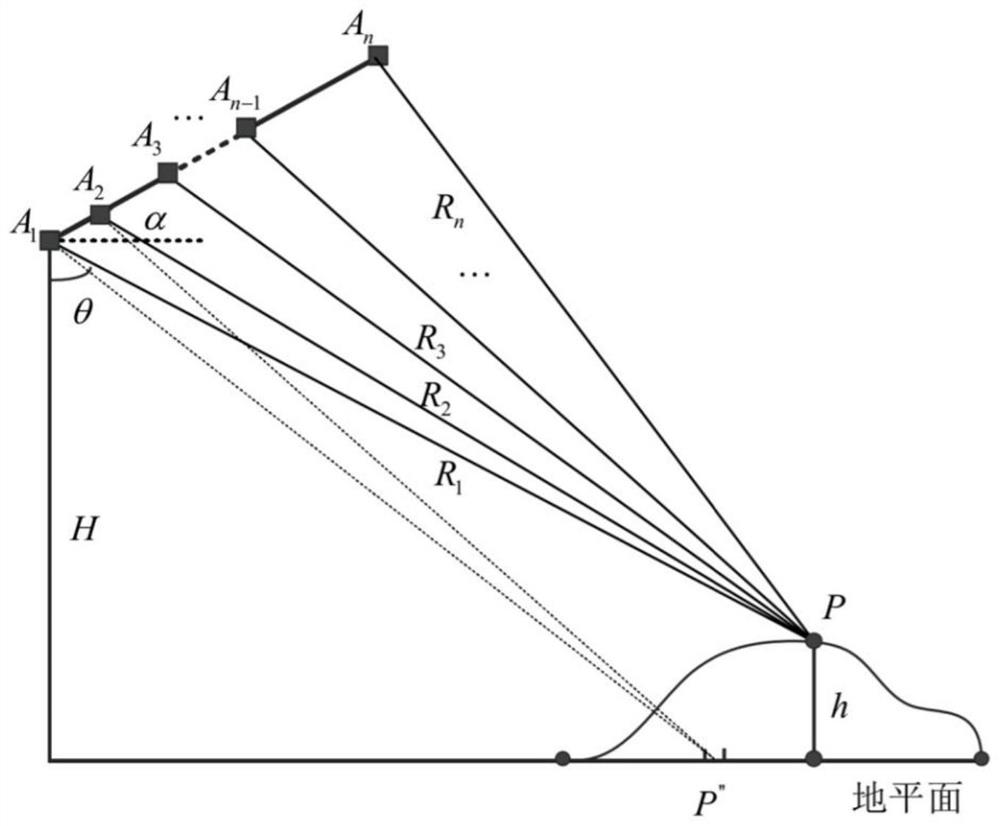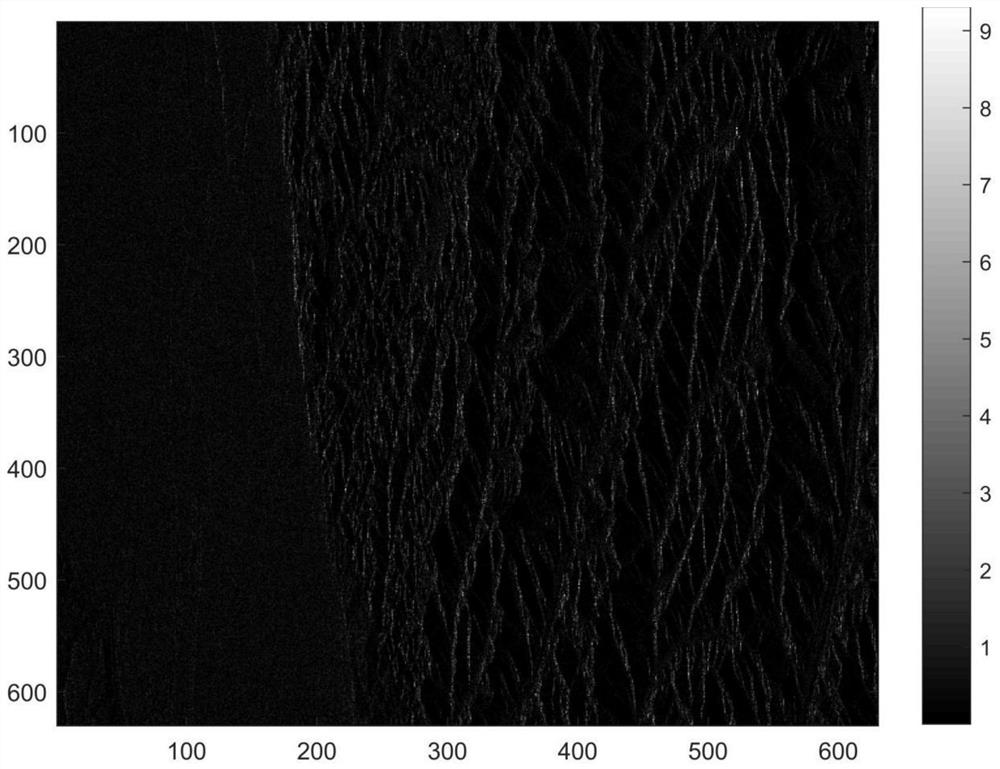InSAR (Interferometric Synthetic Aperture Radar) long and short baseline fusion phase estimation method based on phase derivative variance
A long-short baseline and phase estimation technology, which is applied in radio wave measurement systems, radio wave reflection/re-radiation, and utilization of re-radiation, etc., can solve problems such as poor noise robustness, high memory pressure, and long computing time, and achieve phase The effect of high estimation accuracy, reduced difficulty, and fast calculation efficiency
- Summary
- Abstract
- Description
- Claims
- Application Information
AI Technical Summary
Problems solved by technology
Method used
Image
Examples
Embodiment Construction
[0048] The present invention will be further described in detail in conjunction with the accompanying drawings and examples of implementation.
[0049] Such as figure 1 As shown, the present invention is an InSAR long-short baseline fusion phase estimation method based on phase derivative variance, and the specific implementation includes the following steps:
[0050] Step 1: Use the long baseline and short baseline SAR main and auxiliary images to perform image registration respectively, and obtain the SAR main and auxiliary image interference phases of the long and short baselines in the same scene;
[0051] For the InSAR system, the platform is easily affected by complex environments such as atmospheric turbulence during flight, which will cause attitude changes such as roll, pitch, and yaw in the trajectory of the antenna. There will be phenomenons such as azimuth or distance offset in the image. If the main and auxiliary images are conjugated and multiplied directly to o...
PUM
 Login to View More
Login to View More Abstract
Description
Claims
Application Information
 Login to View More
Login to View More - R&D
- Intellectual Property
- Life Sciences
- Materials
- Tech Scout
- Unparalleled Data Quality
- Higher Quality Content
- 60% Fewer Hallucinations
Browse by: Latest US Patents, China's latest patents, Technical Efficacy Thesaurus, Application Domain, Technology Topic, Popular Technical Reports.
© 2025 PatSnap. All rights reserved.Legal|Privacy policy|Modern Slavery Act Transparency Statement|Sitemap|About US| Contact US: help@patsnap.com



